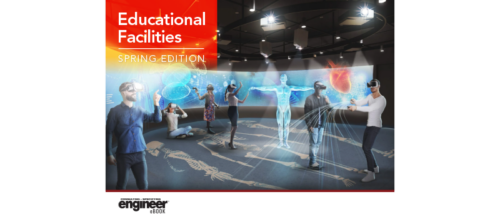School IAQ Solution Debate
In a continuation from our September "Letters to the Editor," ASHRAE TC 9.8 Chairman Mark Lentz addresses some more of the issues surrounding poor IAQ in schools and HVAC design engineers...
Fred Schulz was correct when he said, ‘there is no positive solution,’ (to school IAQ problems) but only when taken in context with the solutions which have typically been provided for schools in the past. This would include VAV (shut-off, fan-powered, and reheat), multi-zone, constant volume reheat, and unit ventilators strategies. Very simply, virtually no HVAC system strategies were ever conceived or configured to provide either effi-cient operation or effective ventilation. Because of this, they can not be controlled to provide these benefits and will continue to produce unsatisfactory results.
To provide a positive solution, the system designer must attack the fundamental underlying challenges. In schools, that challenge is completely driven by the need for adequate ventilation. The trick is to efficiently manage ventilation energy while maintaining thermal comfort. Slaying the twin dragons of IAQ and high energy use is not only possible, it is actually being done. But, because it cannot be done with traditional strategies most engineers use, it requires ‘outside-the-box’ thinking. Solutions do not have to be complex, but they do have to be different. I have taken a very unambiguous position, and one not likely to win me many friends.
Like Mr. Schulz, I operate a small firm, one I started six years ago because I saw the need for these solutions. Mr. Schulz is a true gentleman, but he is also an engineer of the ‘old school.’ HVAC design engineers have been getting ao do things, or simply stopped looking for better solutions. Computers have added to the crisis by making the design of conventional HVAC systems essentially a bookkeeping exercise. What we have stopped doing is fundamental engineering analyses, and become little more than ‘applications specialists’ for pre-engineered solutions, and selling our services as commodities. Many engineers do not even have a basic understanding of the processes they apply, and if you ask them to conceive a new solution, the most common reply is often, ‘It can’t be done,’ or, ‘I don’t know how.’
The problem is that the system strategies we have all used were developed for another time, and another set of challenges. While the challenges we face have evolved, our basic solutions have not. Most advances have merely been refinements. We have yet to address the underlying issues. The problem is that when the solution does not match the challenge, the results invariably compromise air quality, energy efficiency or both.
Sincerely, Mark S. Lentz, P.E.PresidentLentz Engineering Associates, Inc.Sheboygan Falls, Wis.
Lentz serves as chairman of TC 9.8, the ASHRAE committee responsible for the Handbook Chapter on Educational Facilities and was a recent recipient of the ASHRAE Distinguished Service Award.
Do you have experience and expertise with the topics mentioned in this content? You should consider contributing to our CFE Media editorial team and getting the recognition you and your company deserve. Click here to start this process.


